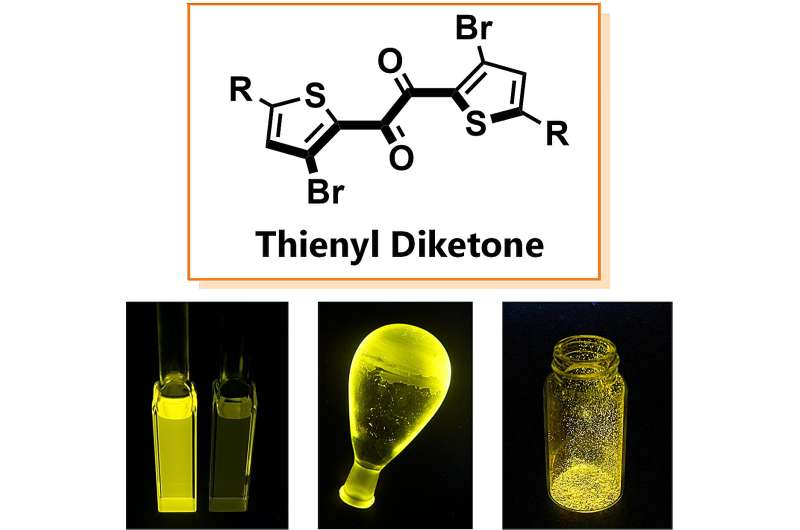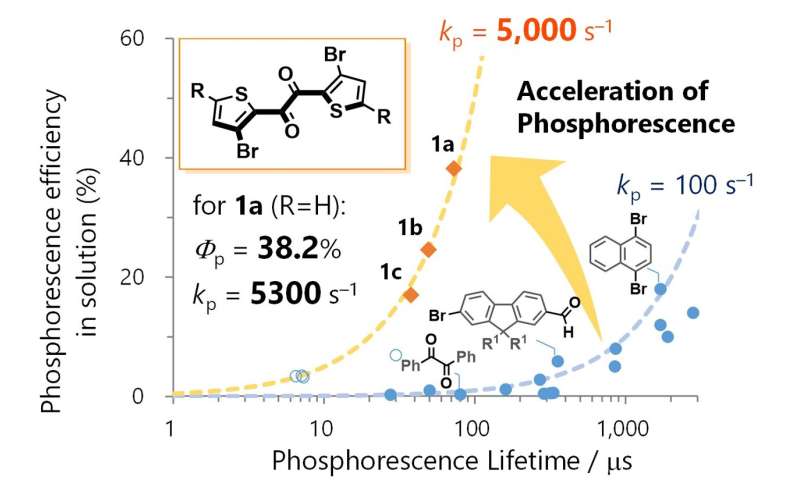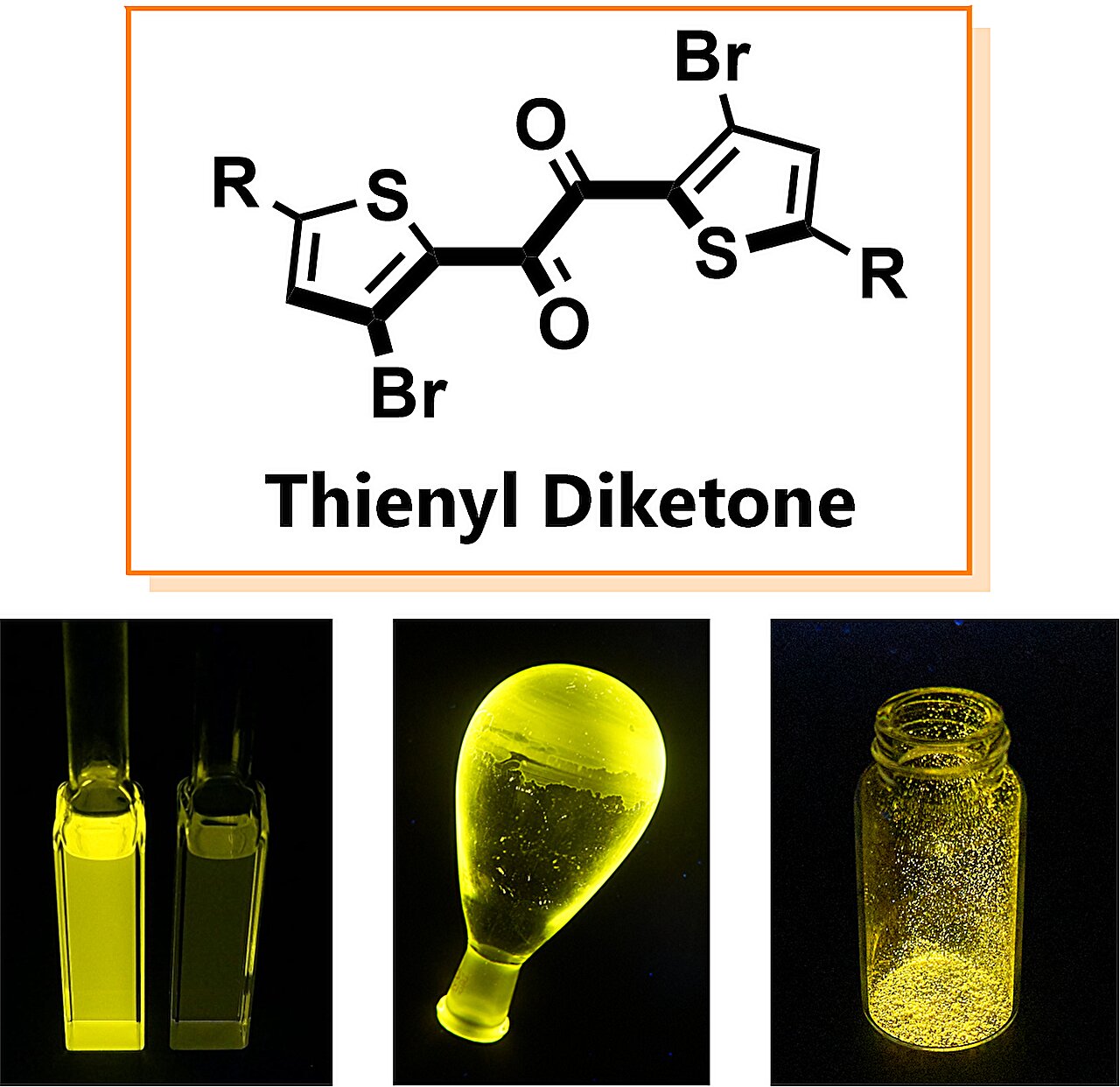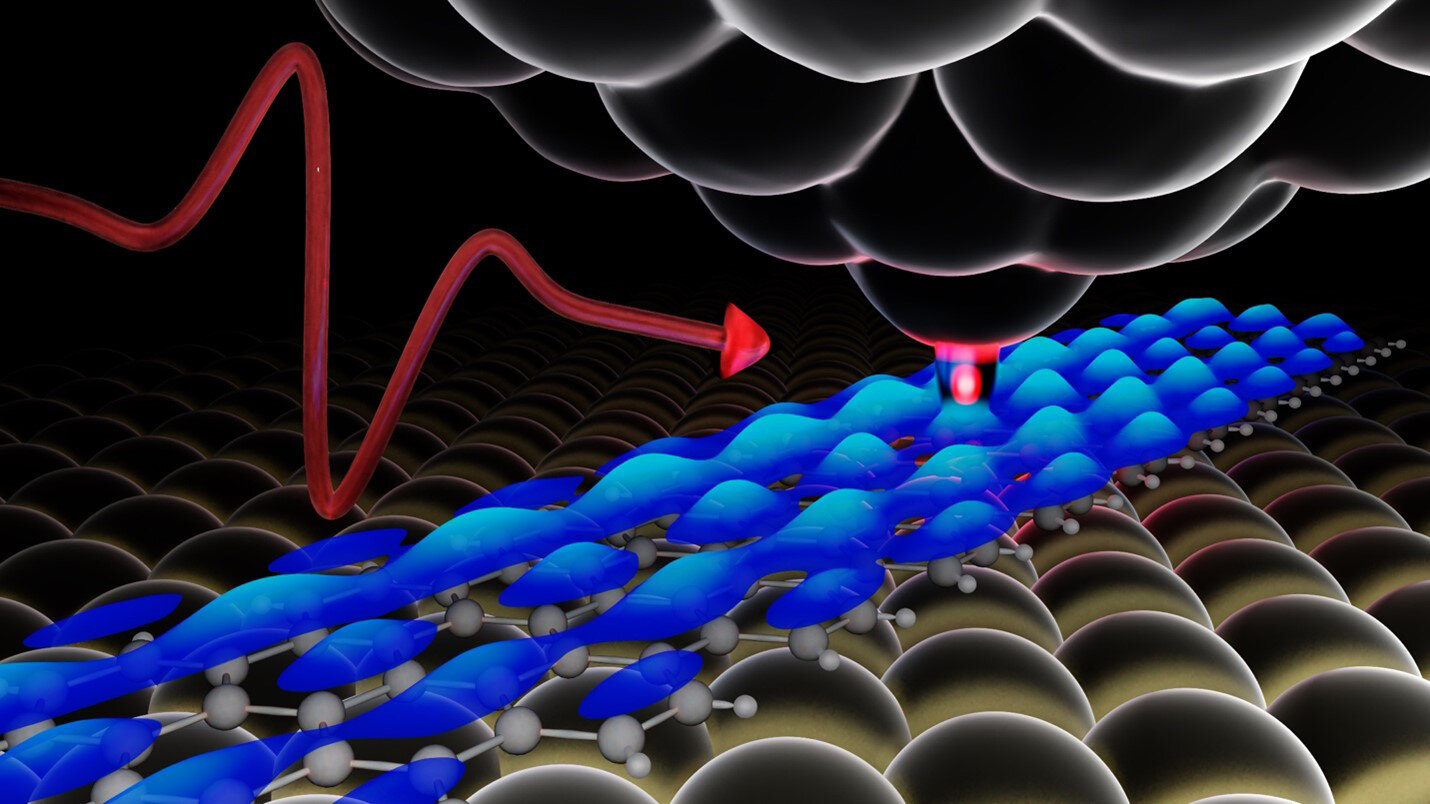New organic molecule breaks phosphorescence efficiency records and paves way for rare metal-free applications

Chemical structure of the molecule and phosphorescence photographs taken under UV radiation. Credit: Osaka University
A research team led by Osaka University discovered that the new organic molecule thienyl diketone shows highly efficient phosphorescence. It achieved phosphorescence that is more than ten times faster than traditional materials, allowing the team to elucidate this mechanism.
The paper was published in the journal Chemical Science.
Phosphorescence is a valuable optical function used in applications such as organic EL displays (OLEDs) and cancer diagnostics. Until now, achieving high-efficiency phosphorescence without using rare metals such as iridium and platinum has been a significant challenge. Phosphorescence, which occurs when a molecule goes from a high-energy state to a low-energy state, often competes with non-radiative processes where the molecule loses energy as heat.
This competition can lead to slow phosphorescence and lower efficiency. While previous research showed that incorporating certain structural elements into organic molecules could accelerate phosphorescence, these efforts have not matched the speed and efficiency of rare metal-based materials.
-

Graph showing phosphorescence acceleration and its effect on efficiency. Orange diamonds are thienyl diketones and blue dots are previous molecules. kp represents the degree of phosphorescence. growing of kp enables the improvement of efficiency. Credit: Osaka University
-

Photo showing the mechanism of fast phosphorescence. Blue light beams converge on the molecule to generate prominent yellow columns, representing the acceleration of phosphorescence through mixing of singlet states. Credit: 2024 YAP. Co., Ltd.
The research team’s breakthrough with the new organic molecule thienyl diketone represents a significant advance in the field. Yosuke Tani, senior author of the study, said: “We discovered this molecule by chance and initially did not understand why it demonstrated such high performance. However, as our research progressed, we began to connect the pieces and deepen our understanding .”
“Our research has led to a clearer understanding of the mechanism behind the performance of this molecule than any previous organic phosphorescent material,” explains Dr. Now. “However, we believe there is still much to explore and we are excited about its potential applications.”
This research provides new design guidelines for the development of phosphorescent organic materials that do not rely on rare metals, offering the potential to outperform and replace these materials in various applications. The findings promise significant advances in the fields of OLED, lighting and medical diagnostics, among others.
More information:
Yosuke Tani et al, Fast, efficient, narrow-bandwidth room-temperature phosphorescence from metal-free 1,2-diketones: rational design and mechanism, Chemical Science (2024). DOI: 10.1039/D4SC02841D
Provided by Osaka University
citation: New organic molecule shatters phosphorescence efficiency records and paves way for rare metal-free applications (2024, July 4) Retrieved July 4, 2024 from https://phys.org/news/2024-07-molecule-shatters -phosphorescence-efficiency lays.html
This document is subject to copyright. Except for any fair agreement for study or private research purposes, no part may be reproduced without written permission. The content is provided for informational purposes only.













Post Comment